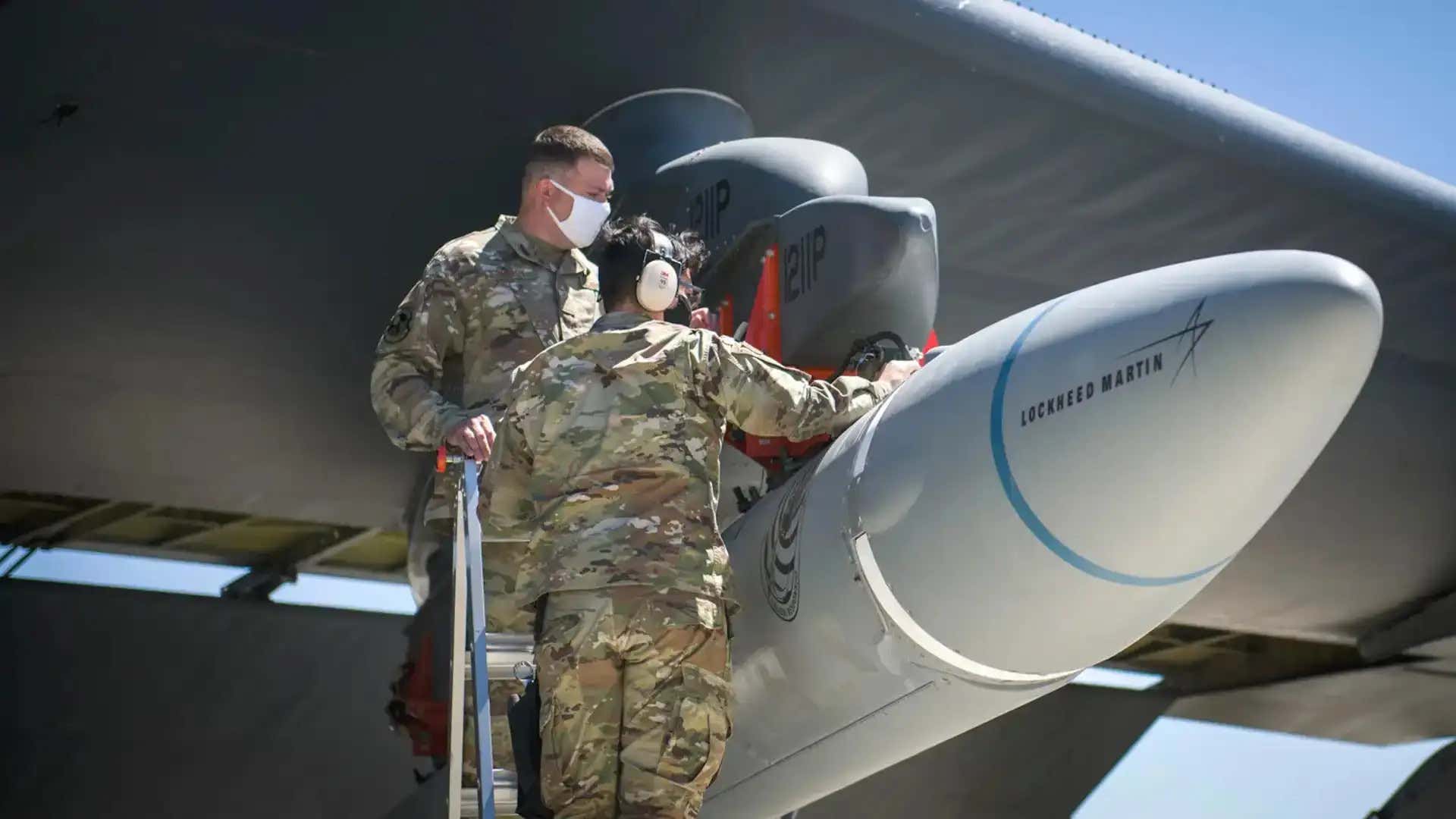Russia, the ‘world leader’ in hypersonic missiles, is now reportedly developing next-generation missiles even as the US is still finding its way with the technology.
Ukraine Deploys ‘Dummy Soldiers’ In Full Combat Gear With Assault Rifles In Kharkiv To Bamboozle Russia
Russian Deputy Prime Minister Yuri Borisov told Russian news agency Interfax last week that Russia is continuing to develop powerful and advanced hypersonic weapons. It currently has three operational hypersonic missiles- the Avangard, Kinzhal, and Tsirkon or Zircon.
“Work is underway to create a new generation of hypersonic missiles for land, air, and sea platforms. In terms of their characteristics, they will surpass the existing and future developments of the leading states,” Borisov told Interfax.
Borisov stated that tests of the next-generation armaments on Tupolev Tu-22 supersonic bombers have started. However, the development of new hypersonic weapons, particularly the new Zircon hypersonic missile, has been delayed.
‘Made In Russia, Recycled In Ukraine’ — Putin’s Best Fighter Bombers Are Being Sold As Souvenirs In Ukraine
The air-to-ground version of the missile has been delayed in favor of the naval variant, apparently due to a work backlog.

In March this year, Russia became the first country ever to use a hypersonic weapon in combat when it fired its Kinzhal hypersonic missile at a military facility inside Ukraine. Recently, a Pentagon report revealed that Moscow fired at least a dozen hypersonic missiles on Ukraine.
“We have seen the Russians use hypersonic missiles in the past over the last 75-plus days, largely to hit buildings. They have not fired, from our assessment, a whole lot of hypersonic missiles. And it’s a bit of a head-scratcher why you would use a hypersonic against a building,” said Pentagon Press Secretary John F. Kirby.

Currently, only Russia and China have operational hypersonic missiles, while the US is still a couple of years away from fielding one of its own despite an enhanced focus on research, development, and testing of hypersonic weapons in recent days.
The US has so far conducted two successful tests of missiles under the Hypersonic Air-breathing Weapon Concept (HAWC) program of the DARPA, with the latest being earlier this month. The first test was conducted secretly in mid-march and was hailed as a success by the officials.

The second test took place precisely one day before the US Congressional Research Service released a report on hypersonic weapons on May 5.
Today, the US Air Force conducted another hypersonic missile test from a B-52 Bomber.
However, if the report about Russia advancing its hypersonic program proves to be authentic, it will be another headache for the US and other western countries.
Russia’s Next-Generation Hypersonic Weapons
Borisov said Russia’s main focus was on developing new hypersonic weapons as well as improving the efficiency, range, and accuracy of existing platforms like the Kh-47M2 “Kinzhal” missile.
“There is nothing like Kinzhal. It flies at a speed exceeding the speed of sound by more than 10 times, and at the same time maneuvering along the entire trajectory of its flight, is impossible to be intercepted by air defense systems,” Borisov said.
Hypersonic missiles are projectiles that move at speeds greater than Mach-5 or five times the speed of sound (approximately 3,800 mph, 6,100 km/h, or 1.7 km/s). A missile moving at Mach-5 could reach Washington in approximately an hour and a half from Moscow and a little over an hour from Russia’s Sakhalin Island above Japan to Hawaii.

The speed and dexterity of these missiles, especially in the high atmosphere, pose a threat to existing missile defense systems, according to US Defense Department experts. Further, the hypersonic missiles could carry a nuclear warhead and go undetected by the radars.
Hypersonic weapons, such as Russia’s 3M22 Zircon, travel at speeds up to Mach 6 and have a low atmospheric-ballistic trajectory, allowing them to bypass typical anti-missile defenses.
According to the Russians, the missile uses improved fuel with a range of up to 1,000 kilometers. And it moves so quickly that the air pressure in front of the weapon creates a plasma cloud that absorbs radio frequencies and renders it virtually invisible to active radar systems.
Being in a position where the US military neither has the means to detect these strikes from Russia nor a missile of the same class to create effective deterrence puts the US in a position of disadvantage and vulnerability against Russia.
A show by state-backed media had earlier threatened a nuclear strike by hypersonic missiles on three European capitals (London, Berlin, Paris) within seconds.
A highhanded Russian leadership coupled with advancement in its hypersonic missiles could prove a menace to NATO. The US investment in hypersonic weapons is a frantic response to that looming threat.
- Contact the author at sakshi.tiwari9555@gmail.com
- Follow EurAsian Times on Google News




